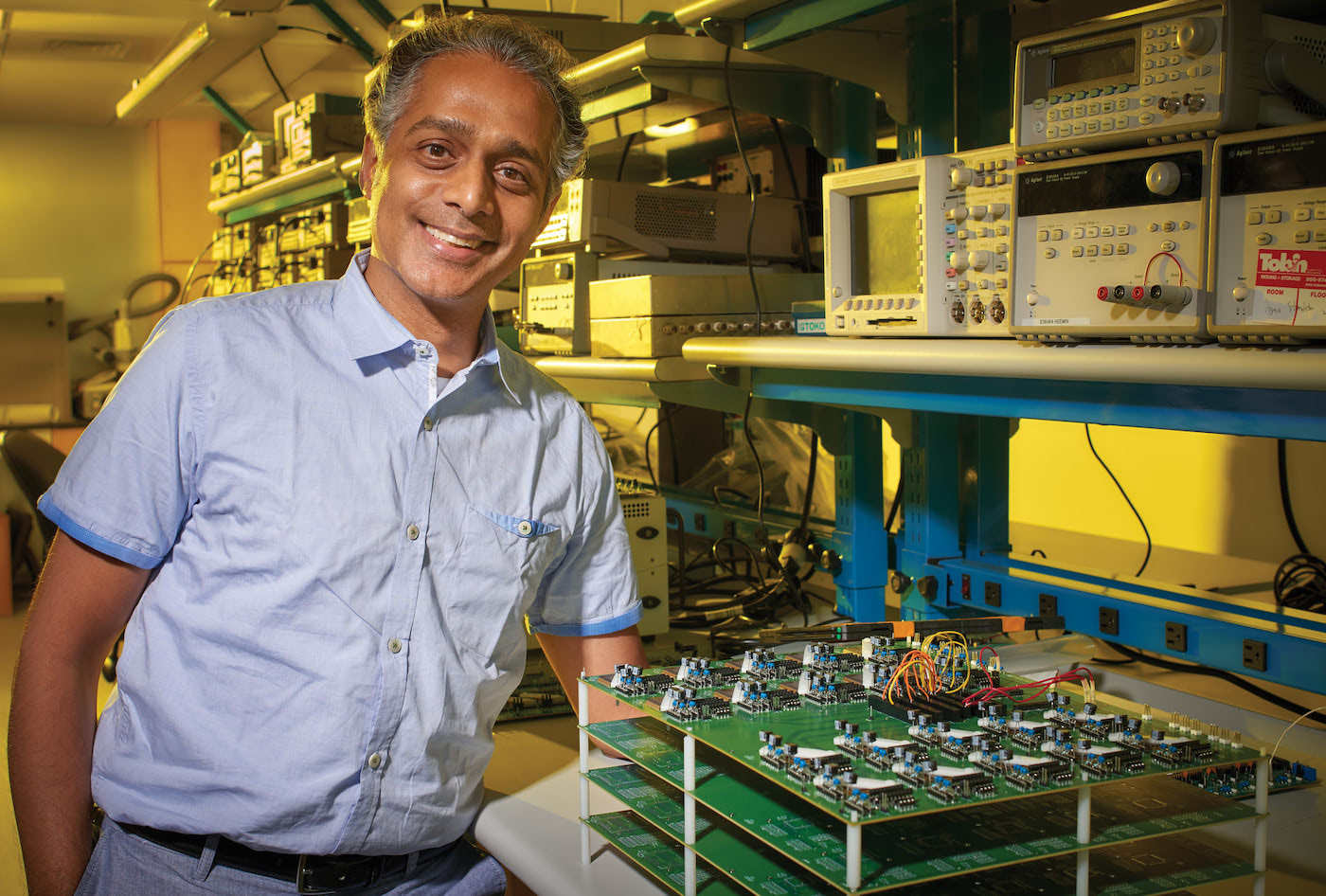- Undergraduate
Bachelor's Degrees
Bachelor of ArtsBachelor of EngineeringDual-Degree ProgramUndergraduate AdmissionsUndergraduate Experience
- Graduate
Graduate Experience
- Research
- Entrepreneurship
- Community
- About
-
Search
All Thayer News
Sarpeshkar elected to the National Academy of Inventors
Dec 17, 2018
Rahul Sarpeshkar, professor of engineering and the Thomas E. Kurtz Chair in the William H. Neukom Academic Cluster in Computational Science, has been named a fellow of the National Academy of Inventors (NAI).
Election as an NAI Fellow is the highest professional distinction for academic inventors “who have demonstrated a prolific spirit of innovation in creating or facilitating outstanding inventions that have made a tangible impact on quality of life, economic development and the welfare of society.”
Sarpeshkar is a leader in the fields of medical devices and electronics as well as ultra-low power, analog, and bio-inspired design.
“I love the sizzle in the brain created by an invention that solves a problem you have been working on intensely,” Sarpeshkar said. “It’s an honor to be named an NAI Fellow along with a distinguished group of fellow inventors all working towards discovering solutions to some of the world’s greatest challenges.”
His pioneering work with analog circuits and analog computation has powered the innovation of implantable medical devices, synthetic biology, systems biology, neural prosthetics, and ultra-energy-efficient computing systems. Inventions spurred by his work include ultra-low-power cochlear implants for the deaf and ultra-low-power brain-machine interfaces for the blind and paralyzed.

Rahul Sarpeshkar, professor of engineering and the Thomas E. Kurtz Chair in the William H. Neukom Academic Cluster in Computational Science
“I am very proud to welcome another class of outstanding NAI Fellows, whose collective achievements have helped shape the future and who each day work to improve our world,” said Paul R. Sanberg, President of the NAI. “Each of these new NAI Fellows embodies the Academy’s mission through their dedication, creativity and inventive spirit. I look forward to working collaboratively with the new NAI Fellows in growing a global culture of innovation.”
At Dartmouth, Sarpeshkar serves as inaugural chair and lead faculty of the Neukom Academic Cluster, which explores computational and engineering principles of intelligence. The clusters, designed by faculty from across the institution to address major global challenges, are part of President Hanlon’s vision for strengthening academic excellence at Dartmouth.
He has published 137 research articles, holds 37 patents, and has authored a leading textbook on analog circuits and bioelectronic systems. Sarpeshkar—whose cross-disciplinary team includes researchers from physics, engineering, microbiology, and computer science—also holds rank of professor in the Department of Physics and Astronomy in the Faculty of Arts and Sciences, and at Geisel School of Medicine in the Departments of Microbiology and Immunology, and Molecular and Systems Biology.
Throughout his career, Sarpeshkar has received several awards, including the NSF Career Award, the ONR Young Investigator Award, the Packard Fellows Award, the Indus Technovator Award, and is a Fellow of the Institute of Electrical and Electronics Engineers.
As the newest NAI Fellow, Sarpeshkar joins Eric Fossum, John H. Krehbiel Sr. Professor of Engineering and associate provost for entrepreneurship and technology transfer; Tillman Gerngross, professor of engineering; Richard Greenwald Th’88, adjunct professor of engineering; Elsa Garmire, Sydney E. Junkins 1887 Professor of Engineering Emeritus and former Thayer dean; Robert Dean Jr., adjunct professor of engineering emeritus, as well as other faculty across Dartmouth.
The formal induction ceremony for this year’s fellows will take place in April at Space Center Houston, located within NASA’s Johnson Space Center.
The NAI was founded in 2010 to recognize and encourage inventors with patents issued from the US Patent and Trademark Office, enhance the visibility of academic technology and innovation, encourage the disclosure of intellectual property, educate and mentor innovative students, and translate the inventions of its members to benefit society.
For contacts and other media information visit our Media Resources page.
